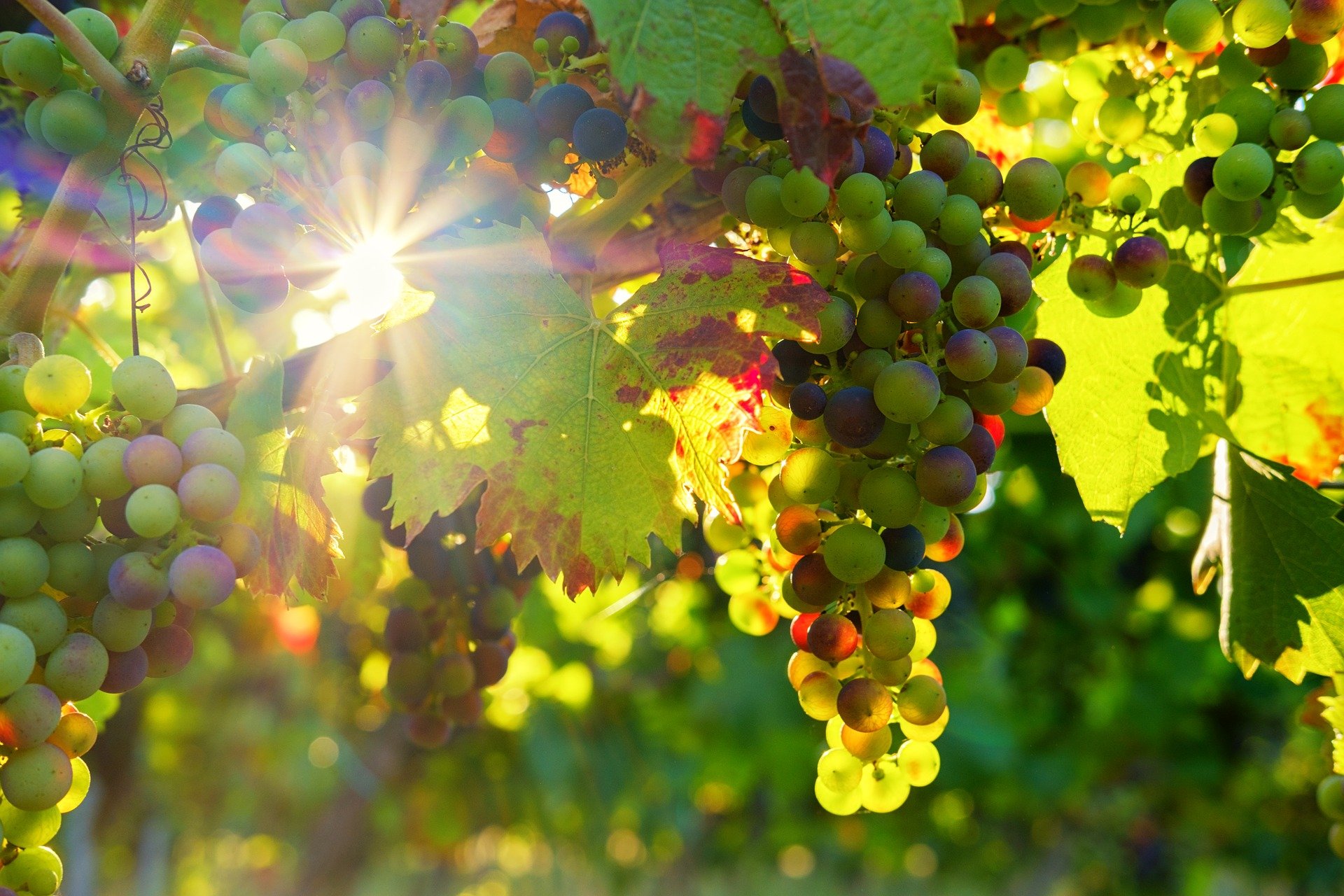Did you know that Afghanistan has long been famous for its many delicious types of fresh fruit? Despite the popular image of Afghanistan as an arid, rugged desert, the country in fact possesses fertile soil and a warm and dry climate that provide the perfect growing conditions for a rich variety of fruit.
According to the Ministry of Agriculture, Irrigation, and Livestock, at least 1.5 million tons of fruit are produced every year, two-thirds of which are consumed within the country. Read on to learn more about some of Afghanistan’s most popular and delicious fruits: grapes, melons, and pomegranates.
Grapes
Given their high productivity and significant commercial value, it’s not surprising that grapes are one of the most attractive horticultural crops in Afghanistan. Grape production tends to be concentrated in a handful of central Afghan provinces, where lush green vineyards are a common sight. Hussaini, taifi, kata, and kasendra are among the more popular varietals for fresh grapes; varieties for raisin production include the keshmeshi and shondakhanai.
A unique way to keep grapes fresh
In order to keep grapes fresh for months after they are harvested, some Afghan farmers rely on a preservation technique developed centuries ago in Afghanistan’s rural north. Known as kangina, this method involves packing fresh grapes into homemade mud containers, which are then sealed with more mud and stored in a dry, cool place. The clay-rich mud keeps air and moisture away from the grapes and insulates them from the cold, thus allowing them to stay perfectly fresh for around six months. Typically, grapes are preserved using kangina in the autumn so that they can then be eaten fresh at Nowruz, or new year, which falls on the spring equinox.
Transforming grapes into raisins
Grapes that are not eaten right away or preserved using the kangina method are dried and made into raisins. This drying process can take place naturally in the sun, but it’s also common for grape growers to dry their fruit in traditional “raisin rooms” known as keshmesh khanas. While fresh grapes are certainly delicious, raisins are usually easier to store and preserve, and often fetch a higher price than their fresh counterparts.
Melons
Along with grapes, melons are one of Afghanistan’s most prized fresh fruit exports, as well as a popular crop for domestic consumption. Kabul in particular is renowned for its bountiful melon market. While melons are grown all over the country, the best melons are generally agreed to come from Kunduz in northern Afghanistan.
Dozens of different varieties
Melons of all shapes, sizes, and colors are grown in Afghanistan; in fact, the country produces an estimated 38 varieties of melon. Some of the most famous types include the sawzmaghz, a green, not-too-sweet melon that is prized for its thirst-quenching properties; the zormati, a round, medium-sized bright yellow melon that smells strongly of flowers; the qashoqi, a large, pale yellow melon with pulp so soft that it must be eaten with a spoon; and the arkani (or qoter), which has a very thick and resistant skin that allows the melon to be easily transported or stored through the winter. Watermelons are also widely grown.
The preferred fruit of royalty
Afghan melons were a particular favorite of Babur, the first emperor of the Mughal dynasty who made Kabul his capital for two decades in the early 16th century. When the Mughals shifted their capital to the Indian city of Agra, Babur, who was also an avid gardener, had melon seeds and an expert agronomist brought with him so that Afghan melons could be grown in the royal gardens there.
Pomegranates
Embedded in myths and stories over thousands of years of human history, few fruits are more famous than the pomegranate, and Afghanistan’s pomegranates are particularly renowned. Pomegranates are grown all over the country—the season lasts from October to January—but an especially prized variety is the Kandahar pomegranate, which boasts an exceptional sweetness and hefty size. This pomegranate can weigh up to one kilogram!
A medicinal fruit
The pomegranate has long been valued for its many health benefits, and it is still an important medicinal ingredient in many Afghan households today. Just about every part of the pomegranate, including the leaves, flowers, and bark of the tree, can be used for a medicinal purpose. For example, dried pomegranate skin can be ground into a powder to treat anemia, while the juicy pomegranate seeds, known as arils, can help prevent a great variety of conditions such as high blood pressure and diabetes.
A fruit worth celebrating
A special festival celebrating the red pomegranate blossom is held in mid-February in the Kandahar region. During the festival, which is known as the Anar Gul, poets gather together to honor the pomegranate, often by reciting verses featuring the fruit that are drawn from Afghanistan’s rich poetic heritage.

